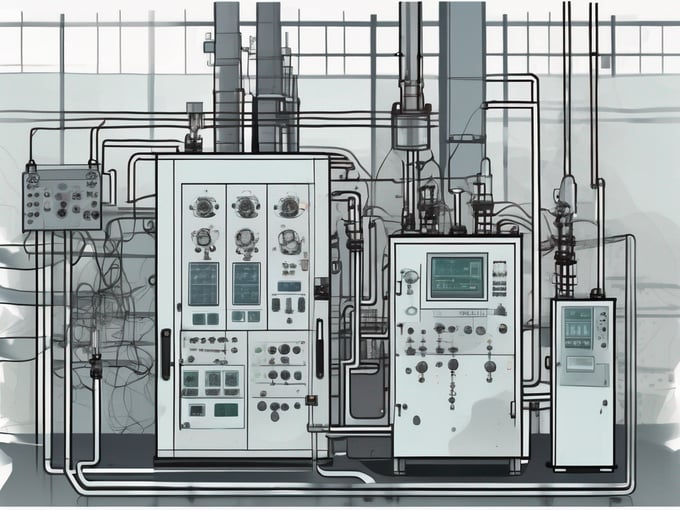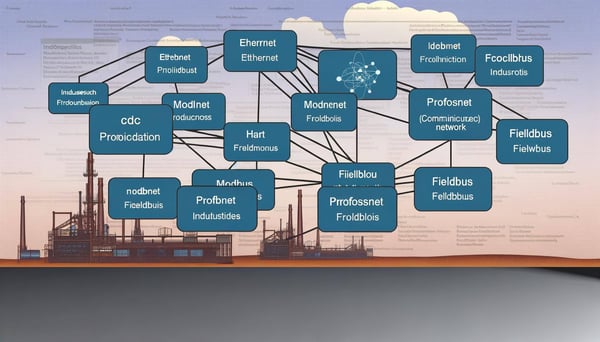
Fundamentals of MelsecNet/H
In the world of industrial automation, the importance of reliable and efficient communication protocols cannot be overstated. These protocols serve as the backbone of industrial operations, enabling seamless interaction between various devices and systems. One such protocol that has gained significant traction in the industry is MelsecNet/H. Developed by Mitsubishi Electric, MelsecNet/H is a high-speed, deterministic network protocol designed for industrial applications.
Understanding MelsecNet/H
MelsecNet/H is a part of the MelsecNet series of industrial network protocols. It is designed to provide high-speed, deterministic communication between Mitsubishi programmable logic controllers (PLCs), computers, and other intelligent devices. The protocol supports a wide range of applications, from simple data exchange to complex control tasks.

The key advantage of MelsecNet/H lies in its deterministic nature. This means that the protocol guarantees data delivery within a specified time frame, making it ideal for time-sensitive industrial applications. Furthermore, MelsecNet/H supports a large number of stations, allowing for extensive network configurations.
Technical Specifications
MelsecNet/H operates on a token-passing principle, where only the device holding the token can transmit data. This ensures orderly data transmission and prevents data collisions. The protocol supports a data transmission speed of up to 25 Mbit/s, making it one of the fastest industrial network protocols available.
The protocol supports a maximum of 64 stations in a single network, with a maximum distance of 800 meters between stations when using optical fiber cables. It also provides error detection and automatic recovery features, enhancing the reliability of the network.
Implementing MelsecNet/H
Implementing MelsecNet/H in an industrial setting involves several steps. The first step is to design the network architecture. This includes determining the number of stations, the type of devices to be connected, and the layout of the network. The network can be configured in a ring, line, or star topology, depending on the specific requirements of the application.

Once the network architecture is designed, the next step is to configure the devices. Each device in the network needs to be assigned a unique station number. The devices also need to be configured to use the MelsecNet/H protocol. This can be done using the programming software provided by Mitsubishi Electric.
Hardware Requirements
The hardware requirements for implementing MelsecNet/H depend on the specific devices being used. However, in general, each device needs to have a MelsecNet/H interface. This interface can be built-in, as in the case of some Mitsubishi PLCs, or it can be added as an external module.
In addition to the MelsecNet/H interface, optical fiber cables and connectors are needed to connect the devices. The type of cable and connectors required depends on the distance between the devices and the network topology.
Applications of MelsecNet/H
MelsecNet/H is used in a wide range of industrial applications. Its high-speed, deterministic nature makes it ideal for applications that require real-time control and data exchange. These include assembly lines, process control systems, and automated storage and retrieval systems.
In addition to real-time control, MelsecNet/H is also used for data collection and monitoring. The protocol allows for the collection of data from various devices, making it ideal for applications that require comprehensive monitoring and analysis.
Case Study: Automated Assembly Line
One of the most common applications of MelsecNet/H is in automated assembly lines. In this scenario, the protocol is used to coordinate the operation of various machines and conveyors. The deterministic nature of MelsecNet/H ensures that each machine performs its task at the right time, resulting in a smooth and efficient production process.
Furthermore, MelsecNet/H allows for real-time monitoring of the assembly line. This enables operators to quickly detect and address any issues, minimizing downtime and improving productivity.
Conclusion
MelsecNet/H is a robust and reliable industrial network protocol that offers high-speed, deterministic communication. Its flexibility and scalability make it suitable for a wide range of applications, from simple data exchange to complex control tasks. By implementing MelsecNet/H, industries can enhance their operational efficiency and productivity.



